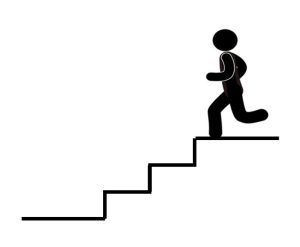Case study: Porter (2008)
Relevance of this case
I first came across this sad case in 2013 when writing an article on Significance, as part of a series of articles on the meaning of terms we sometimes take for granted in health and safety.
It is therefore inevitably going to get a mention in The Book. Chapter 1 refers to this case as an illustration of just how difficult it can be to distinguish a hazard that needs a risk assessment from the normal, everyday objects and activities we need to negotiate.
The case raises questions:
- Should a school document the risks of falling over in the playground?
- Is the risk of a child falling over and hurting themselves “significant” in the scheme of things that children do?
- Does the decision change if you have a climbing frame, steps or some other features that make a fall more likely – or more dangerous?
- In an adult workplace, what commonplace risks can be considered trivial – and which require assessment, control and monitoring?

The accident
In July 2004, Kian Williams, aged 3 years and 9 months, was playing Batman on some steps in the school playground. He fell down a short flight of steps while jumping, hitting his head. He died a month later in hospital – not from the head injury, but from MRSA.
What happened next
The HSE served the school with an Improvement Notice to prevent access to the steps by installing a gate, but they didn’t interview the headmaster and owner of the school, James Porter, until ten months after the accident. Fifteen months later (so over two years after the accident) the HSE decided to bring a case against Mr Porter for breaching HASAW Act 3(1). A year after that, it came to court.
The prosecution argued that steps were a foreseeable hazard, and that it would have been practicable to keep children away from the steps, for example with more staff on duty and a gate.
The defence argued that Kian knew the area was out-of-bounds, and that because of the ethos of self-discipline in the school, one teacher was considered sufficient to supervise 59 children across two playgrounds during a break. Although the gate had been erected since the accident, it reduced the opportunity for supervising teachers to see into the playground, so its benefit was not clear.
In 2007 the original trial judge summed up the decision for the jury:
What you must decide is whether there was an unacceptable risk. The trivial risks of everyday life are not unacceptable. They are simply a fact of life, are they not?
Despite this, a jury decided 11-to-1 that the risk was not trivial, but had been significant, the control measures inadequate and Porter was convicted. The fine was £12,500, but the damage to the head teacher’s reputation and to the school was much greater (although it appears Mr and Mrs Porter carried on running the school until it closed in 2017, by which time Porter would have been in his 70s.)
The appeal
The case went to the Court of Appeal. Porter’s barrister said there was nothing to suggest the steps – which had been in use since 1984 – were a risk and argued there was nothing reasonably practicable Porter could have done to eliminate the risk of a child being injured. The height of the fall was only a little over half a metre – around 57cm.
The defence’s expert witness had argued that “insignificant risks could be ignored, such as those arising from routine activities associated with life in general” and pointed out the many risks to which young children are exposed at home.
At appeal, Lord Justice Moses agreed with this view, making it clear:
No one in this case has suggested that every playground up and down the country for every 3-4 year old must have a flat surface and nothing from which an infant can choose to jump.
Citation
Neutral Citation Number: [2008] EWCA Crim 1271
Read the full ruling at bailii
News stories from the BBC after the first trial and after the appeal.
